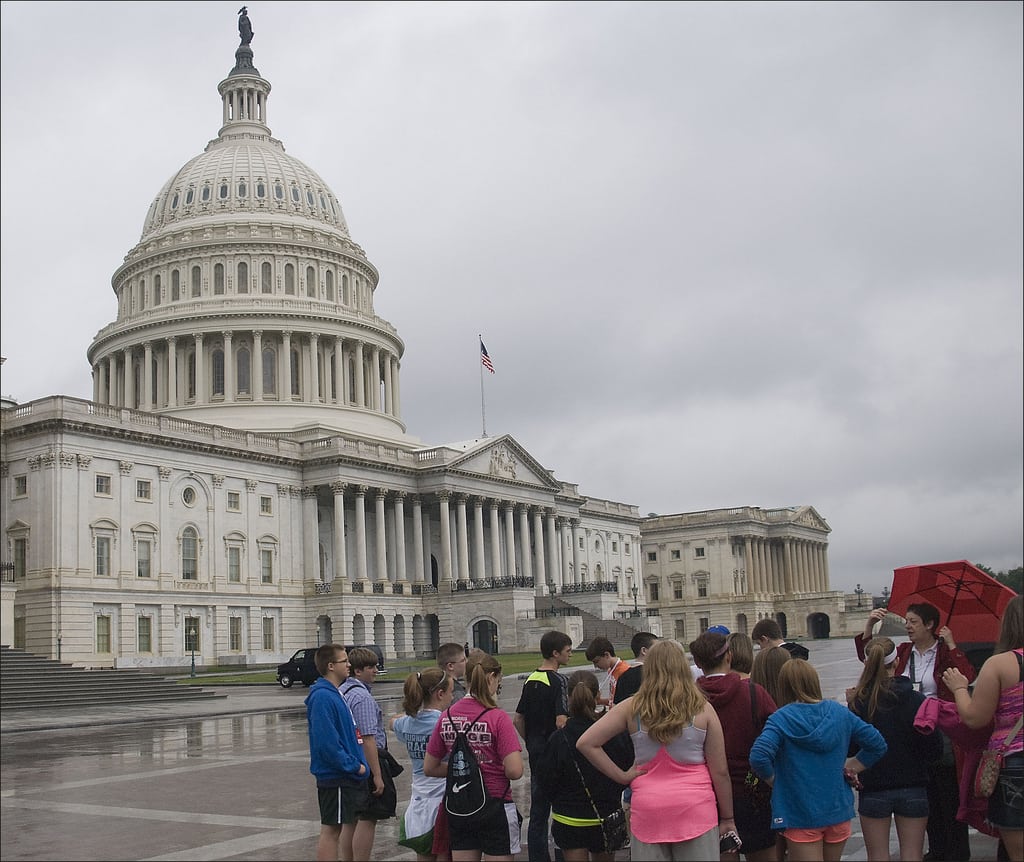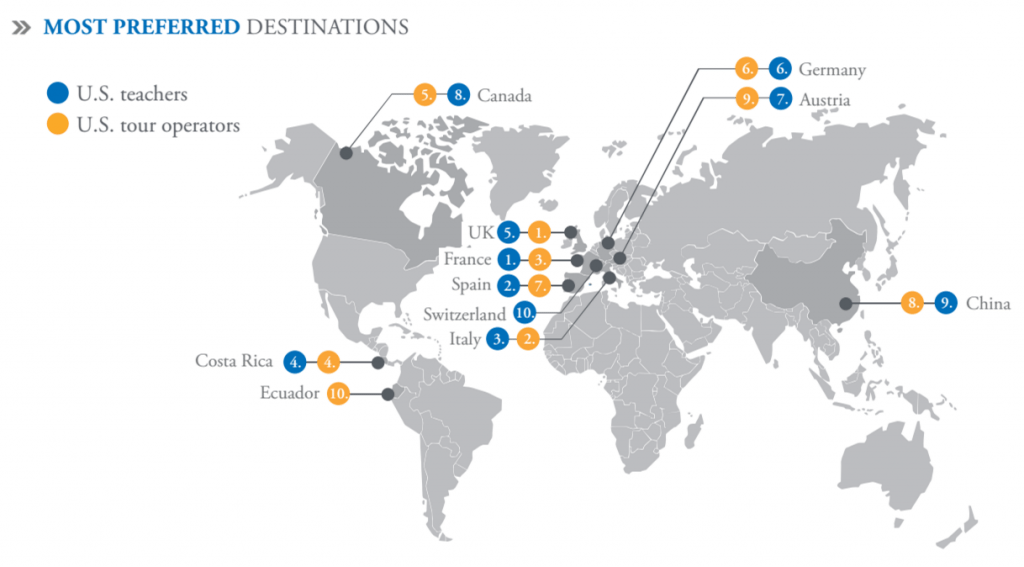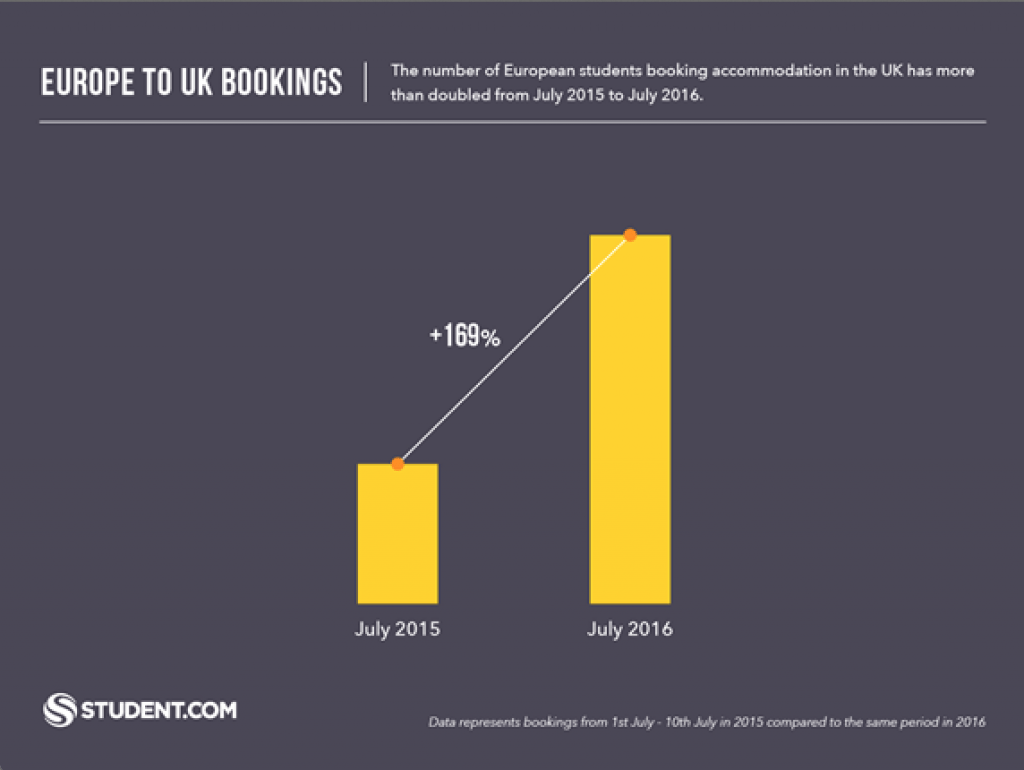5 Charts Showing Student Traveler Preferences in the U.S. and Abroad

Skift Take
The U.S. student group-travel market is one of the best for repeat business. A $5.6 billion market, travel brands should be doing more to court it.
That's the view of the Student Youth & Travel Association, which promotes U.S. domestic and international student and youth travel. The association surveyed more than 2,100 U.S. teachers, group leaders, tour operators and international tour operators from 70 countries between August 2013 to November 2015 to measure the impact of student travel.
The survey considered students up to 18 years old, and primarily those taking trips in middle school and high school, and focused on the importance of teachers in the travel planning and organizing process.
Student travel is mostly group travel, said Carylann Assante, the association's executive director, but a trip is the brainchild of a teacher. U.S. teachers organize an average of 1.7 trips per academic year and travel with 59.7 students per year for domestic and international trips.
Nearly two-thirds of domestic U.S. student trips are for destinations within 50 miles from a school or within the same state as a school, according to teacher respondents. U.S. tour operator respondents, however, said that 62 percent of their student trips involve traveling through more than one state.
Both U.S. teachers (66 percent) and tour operators (52 percent) said European destinations are the most popular for international U.S. student travel. Canada and Latin American destinations were the second- and third-most popular regions.
"Teachers are traveling with their students with an altruistic perspective and parents are also starting to travel with their kids at earlier ages because they're having fewer kids," said Assante. "But there are many parents who also feel that having their kids travel with a class is easier than the family vacation. There's the perception that 'I'm improving my child's chance at high school and college by letting them go on this trip.'"
"Student groups are repeat business at its best because there will always be a new eighth grade class every year to take that trip to Washington, D.C., for example, and once a teacher gets comfortable with a trip and the itinerary they'll want to rebook every year."
Students themselves are also reliable for repeat business. The survey found 28 percent of students who travel take more than one trip per year and those traveling between ages 10 and 18 are likely to return to the destination later in life.
Languages and College Tours are Key Student Travel Interests
Respondents representing both inbound and outbound student travel to and from the U.S. cited language learning as one of the top purposes for traveling. Some 66 percent of international tour operators said their tours have a language focus for international students visiting the U.S.
"Languages are really coming back now because people are meeting people from around the world online and through travel," said Shakil Khan, co-founder of Student.com, a UK-based accommodations booking site that caters to the global college study abroad market. "We're noticing more adventurous kinds of travel on Student.com with more students studying in non-traditional destinations."
Last year more than 255,000 Chinese students younger than 17 visited the U.S. to tour colleges, for example, which is a 20 percent increase in such arrivals from 2014, according to U.S. Commerce Department data. In 2014 Chinese students spent nearly $10 billion on trips to tour U.S. colleges.
Brexit and Terrorism's Impact on Student Travel
Assante hasn't seen mass cancellations of domestic or international student trips among school groups and tour operators her association works with following recent terror attacks in the U.S. and abroad.
She said exchange rates for international students traveling to the U.S. have been a more pressing issue. "We're seeing the number of Canadian students coming to the U.S. down which is similar to Canadian tourists. But the U.S. is still the second-most popular country for international student travel after the UK," (see Chart 3 below).
"Maybe fewer students will go or you're not going to Paris but instead to the south of France, but teachers aren't outright canceling. They're identifying a city that will still meet the same education goals. Schools also want to know that safety procedures are in place and we've seen a shift in crisis communications. There's more of a focus on cancellation insurance now."
There's also the fact that most students only get one chance at a particular class trip. "They don't have the option to go next year, the opportunity won't happen again," said Assante.
With last month's Brexit vote, the impact on student travel to the UK is so far not evident, Student.com states.
But it's still unclear what Britain's exit from the European Union means for the thousands of students across Europe who study at UK colleges and universities, given EU membership makes it easier for students to obtain visas to study in other EU countries.
"The UK is such an established academic center and I think academic is slightly different from the business side of things," said Khan. "International students will continue coming over because it's a fundamental part of our country. In fact, we're seeing demand for the UK more than double from last year for students from other European countries."
Chart 1: Language is one of the top reasons international students up to age18 are looking to travel to the U.S.
Chart 2: Hotels have historically been the most popular accommodation option for groups and 32 percent of respondents in this survey said they prefer hotels. Assante said limited service brands in particular like Courtyard by Marriott and Hyatt Place have become more popular with student groups. Suite style and extended stay brands like StayBridge Suites are also more popular, she said.
Chart 3: The UK is the most popular destination for students, according to tour operator respondents.
Chart 4: For U.S. teachers and tour operators, there are some differences in their preferred destinations but European destinations are generally most preferred.
Source: Student & Youth Travel Association
Chart 5: Bookings from European students going to the UK have dramatically increased year-over-year in July. Keep in mind, however, that this data only consider bookings for July 1 to 10 that were likely made before the Brexit vote occurred so this doesn't portend a longer-term outlook.
Note: this data consider college age students (older than age 18) booking accommodations in the UK and is separate from the Student & Youth Travel Association data.
Source: Student.com









